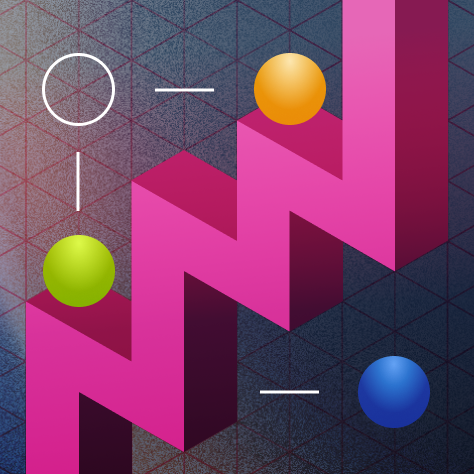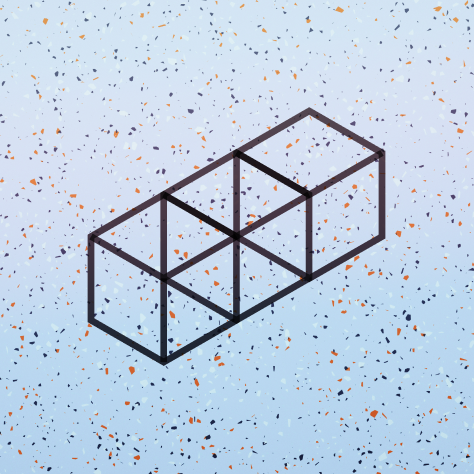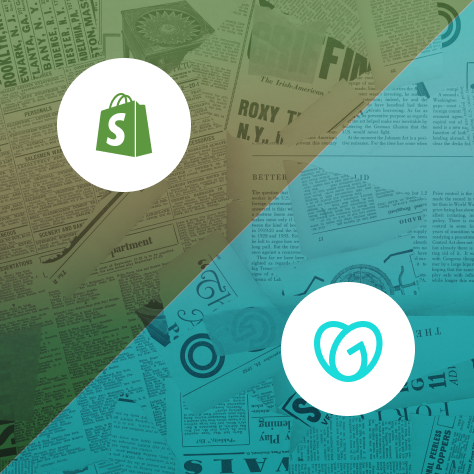Try Before You Buy for Beauty Brands in 2025
Beauty and personal care brands are changing how they sell products online. In 2025, more brands are offering ways for customers to try products before purchasing them. A study of 20,000 consumers by Odore found that 75% are more likely to purchase from new beauty brands after sampling their products.
Real-world proof: Digital-first beauty house ODDITY, the company behind IL MAKIAGE and SpoiledChild™, built its highly profitable growth strategy around try before you buy. Nearly every funnel, from email to SMS, is focused on driving trials before purchase. That focus has helped ODDITY reach 40 million users, generate 703 million dollars in TTM revenue, and raise their 2025 annual sales forecast to 790-798 million dollars, with 23% EBITDA.
This is a response to long-standing challenges in ecommerce, especially for products like makeup and skincare. These products are usually chosen based on color, texture, scent, or feel—things that are difficult to judge from a screen.
With the growth of online shopping and improvements in technology, new solutions have become available. Try-before-you-buy (TBYB) programs are now used to help customers make better decisions before buying.
What Is Try Before You Buy for Beauty and Personal Care
Try Before You Buy (TBYB) is a shopping model where customers can test beauty products before paying for them. This approach works well for items like foundation, lipstick, skincare, and haircare where seeing and feeling the product matters.
The model comes in several forms. Some brands send full-size products with payment collected only if the customer keeps them. Many Shopify brands run their TBYB programs using platforms like TryNow, which handles the temporary payment hold and charges only for what customers keep. Others offer travel-size samples for testing. Many now include virtual testing options using phone cameras or quizzes to match products like foundation to skin tone.
- Physical trial and sampling: Customers receive actual products to try at home
- Virtual try-on: Digital tools show how makeup might look using AR technology
- Hybrid approaches: Combining physical sampling with digital tools for a complete experience
In 2025, the most effective programs blend real product testing with digital tools. This combination helps solve the main problem in online beauty shopping: not being able to test products before buying them.
How the Program Works for Consumers
Try-before-you-buy programs follow a simple four-step process that makes testing beauty products easy and low-risk.
1. Select Products to Sample
Customers browse beauty products on a brand's Shopify store and pick items they want to try. Most programs limit selections to 4-6 items to keep costs manageable. The selection process often includes personalized recommendations based on skin type or beauty preferences.
Many brands now use 14-day trial periods, giving customers enough time to properly test products. Virtual shade matching tools help customers narrow down options before requesting physical samples.
2. Begin the Trial Period
After selecting products, customers receive their samples at home. Some brands send travel-size versions, while others send full-size products. A temporary hold (not a charge) is placed on the customer's payment method. Many brands use TryNow, the leading integration for TBYB, to handle this step without needing custom development or manual work.
The package typically includes clear instructions on how to use each product and details about the return process. Some brands include QR codes linking to tutorial videos or virtual consultations.
3. Decide Which Products to Keep
During the trial period, customers test the products in their daily routines. This hands-on experience helps them decide if the products work for their skin type, color preferences, or beauty needs.
Brands often send helpful follow-up emails with tips on how to use the products. These messages might include links to how-to videos or offer access to beauty experts who can answer questions.
4. Complete Payment or Return
At the end of the trial, customers decide which items to keep. They're only charged for what they keep, not what they return. Returns are made simple with prepaid shipping labels included in the original package.
The return process is tracked through the brand's system, making it transparent for both the customer and the company. This easy return policy removes a major barrier to online beauty shopping. Additionally, virtual try-on tools lead to 64% fewer returns in beauty e-commerce, significantly reducing costs associated with the return process.
Virtual Try-On and AR in Beauty Sampling
Virtual and augmented reality tools are changing how customers test beauty products online. These technologies use smartphone cameras or computer webcams to show how products might look on a person's face or skin.
AR face filters work like social media filters but for shopping. They show how lipstick, eyeshadow, or blush might look on your face in real time. Shade matching tools analyze your skin tone through photos or quizzes to recommend foundation colors.
- AR face filters: Work like social media filters but for shopping. They show in real time how lipstick, eyeshadow, or blush will look once applied.
- Shade-matching AI: Analyzes skin tone through photos or quizzes to recommend the right foundation or concealer shade.
- Virtual skin analysis: Suggests treatments or routines based on visible skin conditions.
- Hair color simulators: Let customers preview how new hair colors or treatments would look.
These digital tools work best when paired with physical samples. For example, a customer might use virtual try-on to narrow down lipstick colors, then request samples of their top three choices to test the actual formula and feel.
Beauty brands on Shopify can add these features through apps and extensions that integrate with their stores. The technology continues to improve, with some systems now able to detect skin undertones and texture for better recommendations.
Common Questions About Returns and Exchanges
When Are Charges Finalized?
Charges are only finalized after the trial period ends, typically 14 days after delivery. Customers confirm which products they're keeping, and only those items are charged to their payment method. Brands clearly communicate this timeline in order confirmations and reminder emails.
How Do I Ship Items Back?
Returning unwanted items is straightforward. Customers use the prepaid shipping label included in their original package, place the products in the same box or reusable packaging provided, and drop it off at a shipping location. The Shopify store automatically updates when returns are processed.
What Happens If Products Arrive Damaged?
If products arrive damaged, customers can contact the brand's support team using information provided with their order. Most brands offer immediate replacements or refunds for damaged items. Additionally, Benefit Cosmetics experienced a remarkable 113% conversion rate increase after implementing virtual try-on (VTO) technology. This feedback helps brands improve their packaging and shipping methods.
Maximizing Conversion on Shopify With TBYB
Try-before-you-buy programs can significantly improve how many shoppers become paying customers. The key is setting up the program correctly on your Shopify store.
Setting up a smooth trial program often depends on how the back end is managed. Tools like TryNow’s checkout integration help handle payment holds, post-trial charges, and return syncing, allowing teams to focus more on the customer experience and less on manual operations.
Successful TBYB programs start with careful product selection. Not every item works well in a trial format. Best performers include foundation (which needs shade matching), skincare sets (which show results over time), and signature scents (which need personal testing).
Pricing requires balancing customer experience with business needs. Most brands don't charge for samples but place a temporary hold on payment methods. Some charge a small shipping fee that's credited toward purchases. The goal is making trials accessible while covering basic costs.
- Loyalty integration: Connect trial programs with loyalty points to encourage participation
- Data collection: Use trials to gather feedback on products and packaging
- Follow-up automation: Set up email sequences that guide customers through the trial period
The best Shopify stores track key metrics to measure TBYB success. These include conversion rate (trial users who purchase), average order value, and repeat purchase rate. These numbers help refine the program over time.
Creating Sustainable Growth for Beauty Brands
Try-before-you-buy programs help beauty brands build lasting customer relationships by removing purchase risk. When customers can test products before buying, they make better choices and return fewer items in the long run.
The personalized nature of TBYB creates stronger connections between brands and customers. Quizzes, shade matching, and customized recommendations make shoppers feel understood. This personalization leads to higher satisfaction and more repeat purchases.
Many brands now focus on sustainability in their sampling programs. This includes:
- Using recyclable or reusable packaging for samples
- Offering digital try-on options to reduce physical waste
- Creating refillable containers for full-size products
- Donating returned products to organizations like Project Beauty Share
Shopify merchants can implement TBYB programs without complex custom development. Tools like Platter provide customizable themes and app solutions that work with Shopify's platform. These tools help manage product trials, payment holds, returns, and customer communications in one place.
For example, AS Beauty portfolio brands like Laura Geller, Julep, and Cover FX use TryNow to support their trial programs on Shopify, making it easier for shoppers to test products and for brands to manage the post-trial experience at scale.
By focusing on customer experience and making smart use of both physical and digital sampling, beauty brands can create TBYB programs that drive growth while building loyalty.
FAQs About Try Before You Buy
How do beauty brands manage returned inventory from try before you buy programs?
Returned items go through quality inspection before being repackaged or recycled, with most brands having dedicated systems to track and process returns efficiently.
Can virtual try-on tools completely replace physical samples for makeup products?
Virtual try-on tools complement physical samples but can't fully replace them, as texture, feel, and wear time can only be evaluated through actual product testing.
Which shipping carriers are most reliable for try before you buy beauty programs?
USPS, UPS, and FedEx offer tracking capabilities and reliable delivery times that work well for beauty sampling programs, with most brands choosing based on cost and regional coverage.
How do beauty brands calculate pricing for try before you buy programs?
Brands calculate pricing by analyzing sample costs, average return rates, and conversion percentages to create a sustainable model that covers expenses while remaining attractive to customers.
Which beauty product categories show the highest conversion rates in try before you buy programs?
Foundation, skincare regimens, and hair color products typically show the highest conversion rates in TBYB programs because they benefit most from personalized matching and in-home testing.






-min.webp)




.webp)


















.svg)


.svg)











.png)

%201.png)



.svg)
.svg)
